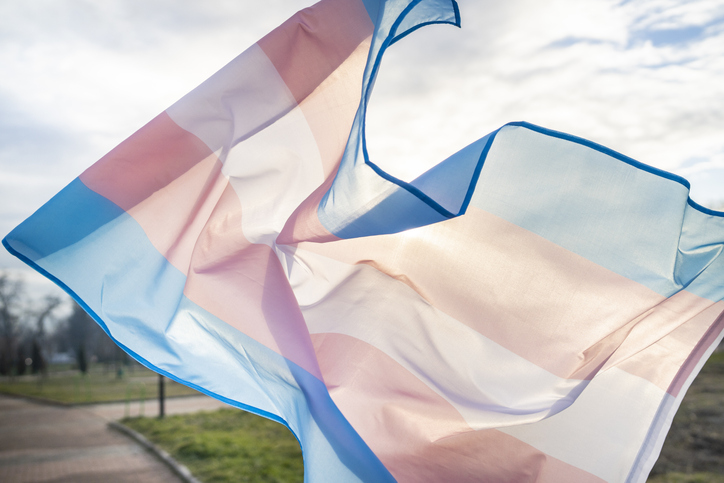In recent years pediatricians around the country have found themselves on the front lines as they battle legislation targeting some of our most vulnerable youth. Sadly one such battle has now come to Long Island.
Nassau County Executive Blakeman this week issued an order that bans teams with transgender girls from using any County sports facility including over 100 ball fields, basketball courts and pools. Schools and organizations using these facilities will be required to sign affidavits stating that there are no transgender girls on their teams. Blakeman felt that this order was necessary even though he said he had not heard of specific examples of transgender girls attempting to compete in women’s sports in Nassau. In this act that was clearly politically motivated, Blakeman created a solution to a problem which he admitted does not exist. He put political expediency ahead of the lives and well being of some of his most vulnerable constituents.
As pediatricians we support our transgender patients in the challenges they face. Our patients are struggling through a mental health crisis that is only heightened among LGBTQ youth (1). Approximately half of transgender youth have considered suicide in the past year as they struggle to fit in (2). Those that are bullied either in person or online are three times more likely to attempt suicide (3). Participation in extracurricular activities and living in accepting communities reduce the risk of suicidal ideation (4). In addition regular exercise and participation in sports are known to reduce anxiety and depression (5). Blakeman’s order effectively eliminates that positive outlet for transgender girls who stand to benefit greatly from the camaraderie, the acceptance and the physical activity that come with being on a team.
The order to ban transgender girls from teams that use County sports facilities is cloaked in the intent of protecting women’s rights in sports. Proponents claim that having transgender girls on teams places them at an unfair advantage and poses a risk to other players.
As a former hockey and soccer mom I spent many a weekend traveling out of state for competitions. I know how hard female athletes work to achieve their goals and to seek scholarships. I also remember fearing injuries as I watched my daughter get checked on the ice or tackled as a soccer keeper during a breakaway. However it’s important to understand a few factual points here.
The number of highly competitive transgender athletes is so exceedingly small (6) it makes much of the discussion surrounding the executive order almost theoretical. There are approximately 300,000 transgender youth aged 13-17 in the U.S. Less than half of these identify as female (7). Only an estimated 12% of transgender youth choose to participate in sports compared to 68% of their counterparts (8). As is the case with all youth athletes only a very small percentage of those will advance to competitive levels. Surely the rarity of female transgender athletes competing at very high levels does not justify blanketly barring all transgender girls from participating in school and recreational sports that could very well be a lifeline for them.
In addition, transgender grade school youth or those who initiate puberty blockers before or at puberty have no physical advantage over their peers (9). For those who have gone through puberty before transitioning it should be noted that success in sports is dependent on many factors including tenacity and determination, time devoted to acquiring and perfecting skills , access to private lessons and one’s body type depending on the particular sport (10).
Perhaps in the rare instances of high level competition the governing boards of the particular sport should be the ones to weigh in should concerns ever arise, rather than politicians unfamiliar with the nuances of science and sport who choose instead to issue executive orders.
By injecting what is a political culture war debate into our local communities where schools, teams and organizations will be forced to grapple with this issue, transgender girls will be further stigmatized and undoubtedly become the target of hateful rhetoric or actions that will place their mental health and physical safety in peril. This is why the American Academy of Pediatrics has joined with all other major health, child welfare and education organizations to oppose legislation that bans transgender youth from participating in sports (11).
Any well researched piece of legislation should weigh the costs and benefits that will ensue in its wake. It would seem that far more transgender youth will stand to be hurt by this order than the theoretical individuals it claims to be protecting. If we are to truly care about public health and seek to explore ways to allow all our youth to be successful and thrive, would we not strive to teach our children to be welcoming and inclusive? Rather than finding ways to further exclude and stigmatize already struggling and isolated youth should we not work to create an atmosphere where more of our transgender youth feel comfortable participating in sports with all the benefits that would provide? Instead the Nassau County Executive has chosen to unnecessarily and carelessly put children’s lives at risk. There will undoubtedly be fallout resulting from the rhetoric surrounding this order even if it is reversed. Most of it will be unseen but keenly felt by the youth he has targeted who will suffer in silence.






























